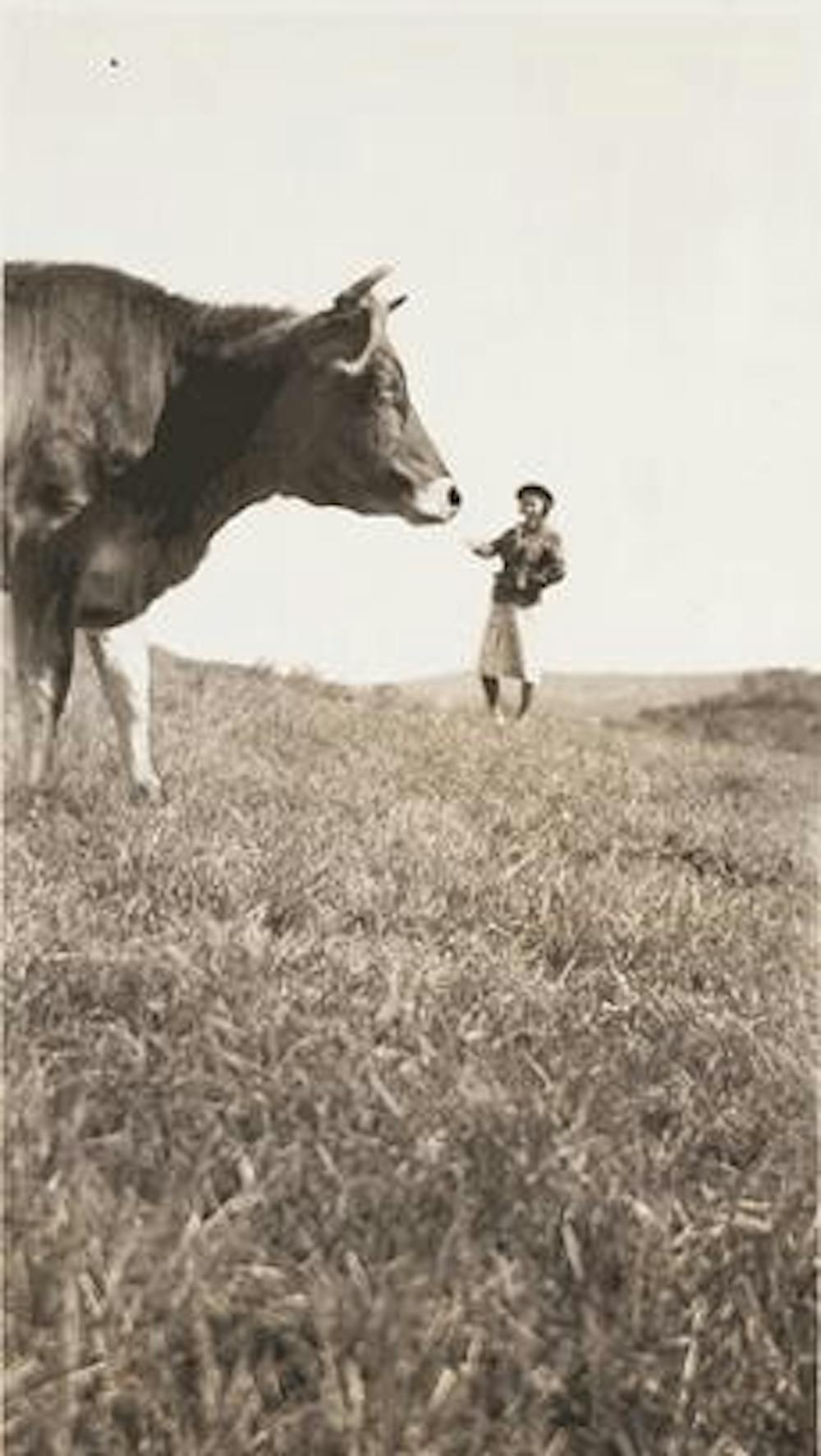"Snapshot" is a hunting term referring to a shot taken quickly and without a fixed target. When Kodak made photography accessible to the masses in 1888, people began hunting for the perfect shot to paste in their albums, show their friends and document their lives. The National Gallery's exhibit, "The Art of the American Snapshot 1888-1978," chronologically documents the evolution of the amateur photograph from its earliest years up through the late 1970s, when photography had become a part of everyday life.
Walking through the "American Snapshot" exhibit is like walking through your grandparents' photo album. The faces might not be familiar, but the scenes of U.S. life certainly are. It's hard not to smile at the pictures of people hugging, playing and even sleeping. Each picture is a window into someone's life, and together they form an astonishingly universal picture of what the United States was like in the different time periods the pictures represent.
One of the themes visible through nearly every era of snapshot photography is the desire to experiment. Though in the beginning some people tried to mimic the stoic studio portraits associated with the early years of photography, soon people began to see the true potential of the medium.
Many played with long exposures and double exposures or set up scenes with strange depth of field. One picture is set up to show a tiny woman feeding an enormous cow. Another shows a ghostly woman playing the piano while a man sits still in a chair nearby.
The exhibit even features what might be considered the first MySpace-style picture, taken in 1910, with the photographer grinning into a mirror, her camera visible. The picture is presumptuously, but perhaps accurately, hand-labeled "The Artist."
Another popular theme that began to emerge is voyeurism. The intentionally candid photos make the viewer feel like they're in on a secret. The portability of the new medium let photographers document their loved ones sleeping for the first time, in the beginning with peaceful pictures of sleepers in huge beds, then later, in all of their drooling, passed-out-anywhere glory.
Cross-dressing proved a surprisingly popular subject in every era. The exhibit points out that even during the most publicly straight-laced times, many people felt enough safe to experiment in their own homes.
The exhibit also does a good job of pointing out the role technology played in the evolution of the snapshot. After World War II, the rise of television culture is a clear influence on the subjects and framing of many of the photos. A sense of drama is evident in many pictures.
With the rise of television also came an increased acceptance of public displays of affection. One memorable shot shows a woman having tackled a man to the ground, their legs flailing.
The concern in many of the photos seems to be documenting the photographers' own lives. Several full album pages complete with doodles and captions are in the exhibit. Vacation photos, pictures of birthday parties and cakes and children playing were as popular in the beginning of amateur photography as they are now.
When not documenting their own lives, people were making sure to document their place in history.
These pictures seemed to become particularly popular in the 1960s. A grainy television set shows the moon landing in one such photo. Another shows a newspaper with the headline, "Kennedy Slain by an Assassin," framed starkly by a newspaper box under a "No Parking" sign.
The picture of the newspaper box shows one of the most exciting trends in the exhibit. True, these may be amateur photographs, but often the scenes they depict are just as interesting and poignant as those taken by any professional. These snapshots often show more calculation and aim than the origin of the term lends them. This personal look into what it meant and means to be an American - and, moreover, human - is truly worth a look.
"The Art of the American Snapshot 1888-1978" is in the West Building of the National Gallery of Art. The exhibit will be on display until Dec. 31. The Gallery is located between Fourth and Seventh streets on the National Mall and is open Monday through Saturday 10 a.m. to 5 p.m. and Sundays from 11 a.m. to 6 p.m.





